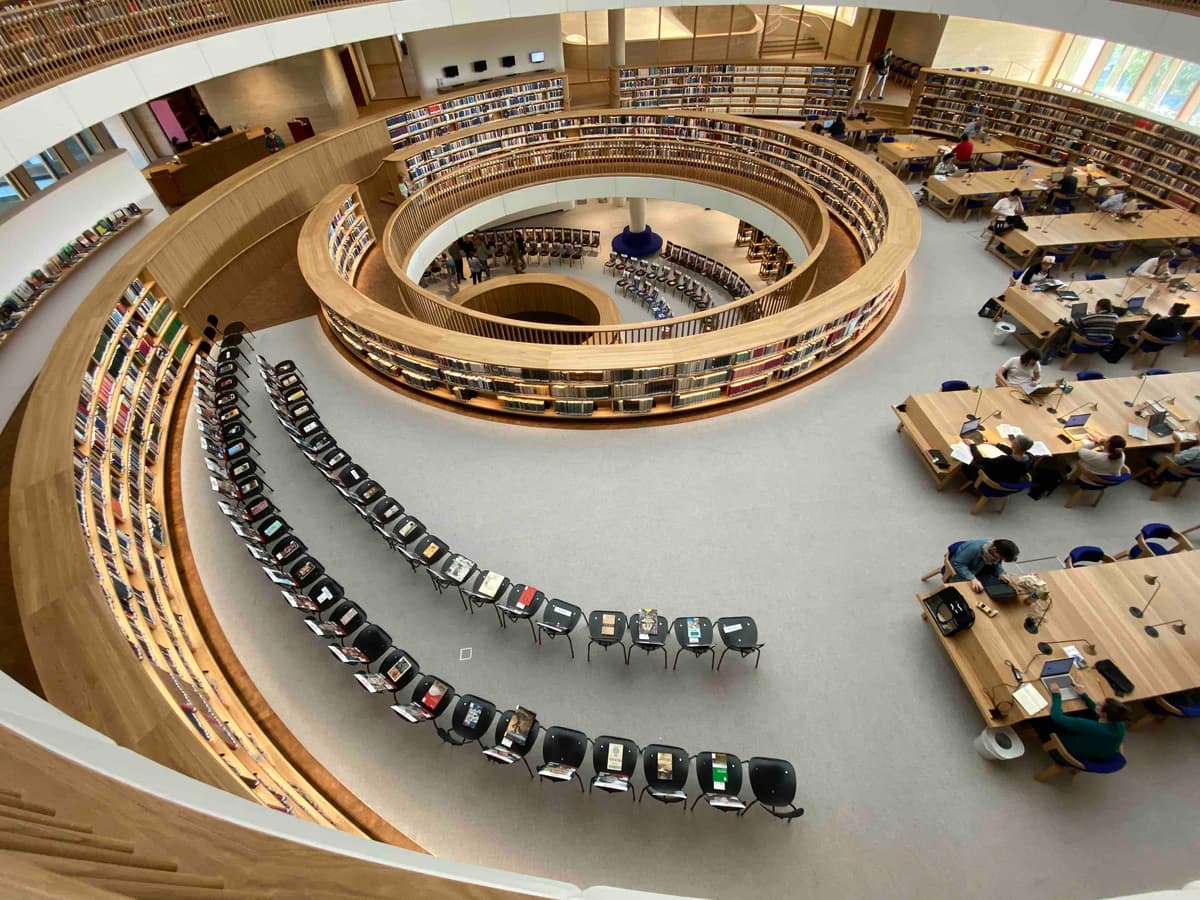Israel’s National Library Begins Daunting Task of Documenting October 7 Atrocities
Recognizing the fleeting nature of digital media, Israel’s National Library has launched a project to establish a central repository for all the existing documentation of October 7 and its aftermath.

The Hamas massacre of October 7 left behind not only countless Israelis dead and missing, but also a staggering amount of digital documentation of the brutal attacks. From bodycams worn by the Hamas terrorists, to terrified text and voice messages of victims, as well as posts to Twitter and other social media platforms, it was the first event of its kind to be documented in real-time digitally.
The National Library of Israel, founded in 1892, immediately recognized the fleeting and changeable nature of digital media documentation. It subsequently launched a collaborative project of massive scope to establish a central repository for all the existing documentation of October 7 and its aftermath.
“The average life of a website is three years and you cannot assume that the material out there today is going to last forever,” the Head of Collections at the National Library of Israel, Raquel Ukeles, tells the Sun.
“The National Library’s core mission is to preserve the collective memory of the Jewish people worldwide and Israelis of all backgrounds and faiths,” she adds.
Ms. Ukeles, a New York native who moved to Israel more than a decade ago, notes that even with the overwhelming eye-witness accounts and evidence of what took place on October 7, denial of the events was almost immediate.
“We saw in real time how the events of October 7 were being denied around the world,” she says. “We want to make the evidence available and accessible for the long-term.”
The library’s central goal is to create a large, authoritative database encompassing the entirety of evidence, documentation, media coverage, and outreach activities, for the benefit of Jewish communal memory and historical research.
“In addition to our work in Israel, we are also working with institutions in the US, Europe and South America to document reactions in Jewish communities following October 7. This includes liturgy, sermons, public statements, rallies and protests, fliers, influencers on Twitter and other social media,” she says.
Ms. Ukeles, who received her doctorate from Harvard, noted that there were many grassroots and volunteer organizations partnering with the library that have been collecting and documenting in real time what happened on October 7 — from eye-witness testimonies and audio recordings to ephemera from social media, military, government and more.
Those contributing to the project include the Israel Oral History Association, the Oral History Division at the Avraham Harman Institute of Contemporary Jewry at the Hebrew University of Jerusalem; the Association of Israeli Archivists; the Zvi Yavetz School of Historical Studies at Tel Aviv University; the USC Shoah Foundation; the Association of Jewish Libraries; the Berman Archive at Stanford University; the Israeli Civil Administration; the Leadership Forum for War Documentation Initiatives; Edut 710; Moked Arava; and many more.
Ms. Ukeles emphasized that the work of collecting, preserving materials, and making them publicly available requires the combined resources and joint commitment of all of the organizations that deal with documentation and preservation. “We are grateful to all who participate,” she says.
The Israeli Civil Administration, for example, has already transferred some 200,000 photos and videos collected by its operations room to the Israel National Library to be preserved for future generations.
“We realized that the National Library could play a crucial role in providing guidance and a long term place for all this material,” she says. “We have the digital tools at hand to collect all this digital information.”
According to Ms. Ukeles, there are tens of thousands of texts, audio and video recordings of fallen victims and fighters, interviews with survivors, families of hostages, plus hundreds of thousands of video recordings created by the IDF and the security forces, advocacy organizations, private individuals — as well as by the terrorists themselves.
In addition, the project will also document and preserve websites related to the massacre and the war, as well as posts on X (Twitter), Facebook, TikTok, Instagram, and other digital media, as well as publications from various government ministries, local authorities, southern and northern border communities, the security and defense establishment, and more.
The library is also working to provide assistance to those historical community archives damaged or destroyed in the course of the Hamas attacks on Israel’s Gaza border communities.
At the same time, the library is also working with legal experts to make sure that it is handling sensitive material properly. Library staff members will undergo training before they begin to catalogue more graphic material.
Ms. Ukeles pointed out that there are 10 library staff members working on the project, which is estimated to take at least five years to complete. “Our small staff has dropped prior projects to devote complete attention to this undertaking. We feel that this work is so important given all that is going on in the world,” she says.
“It’s what we can do to contribute to our nation at this time.”

